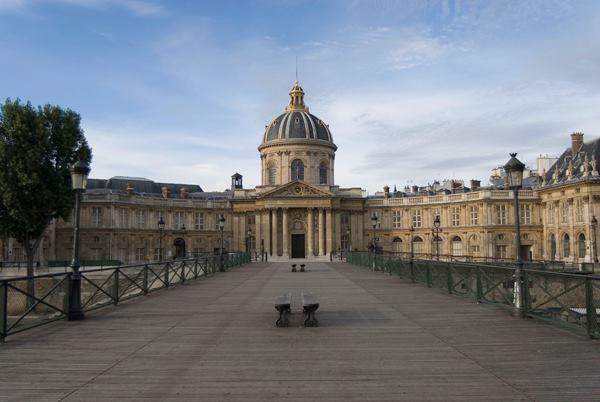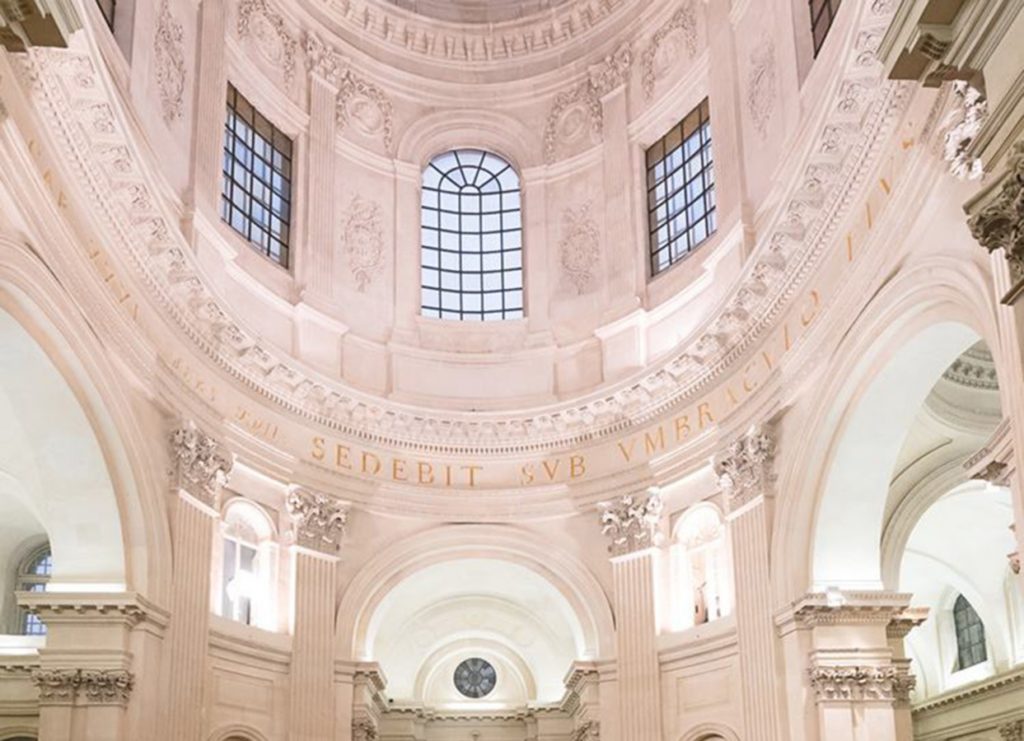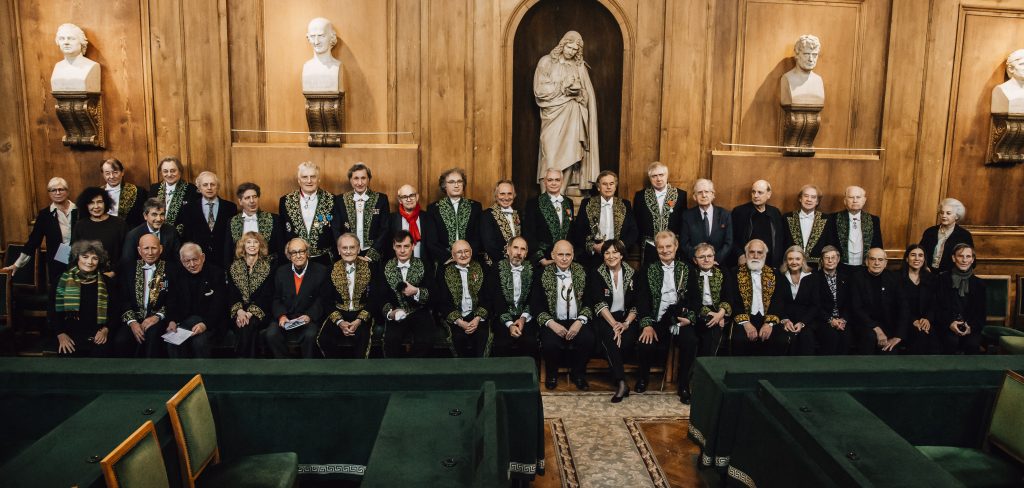The Académie des beaux-arts, an emblematic and historic institution, is one of the five illustrious academies brought together under the aegis of the Institut de France. Since 1816, it has shared this distinction with the Académie française, the Académie des Sciences, the Académie des Inscriptions et Belles-Lettres, and the Académie des Sciences morales et politiques, forming a prestigious conglomerate of knowledge and culture. A direct heir to the royal academies founded in the 17th century, it has a special status and the ability to run itself, part of a long-standing tradition that celebrates and preserves France’s artistic and intellectual heritage. Discover it!
Académie des beaux-arts: missions
A central institution in the French cultural landscape, the Académie des beaux-arts deploys a wide range of missions dedicated to promoting and supporting artistic creation. Its actions, anchored both nationally and internationally, manifest themselves through a multi-faceted patronage policy: awarding prizes to emerging and established artists, organizing competitions, funding artistic residencies, and supporting various cultural projects and associations.
At the heart of its approach, the Academy manages and enhances a rich heritage made up of donations and bequests, including exceptional sites such as the Musée Marmottan Monet in Paris, the Villa Ephrussi de Rothschild in Saint-Jean-Cap-Ferrat, and the Maison de Claude Monet in Giverny, among others. It also maintains strategic partnerships with a vast network of cultural institutions and patrons, reinforcing its presence and influence in the artistic field.
As a consultative body for public authorities, the Academy conducts ongoing reflection on a variety of artistic themes, enriched by the interventions of emblematic figures from the cultural world at its weekly sessions. Multidisciplinary by essence, the Academy comprises 67 members divided into nine artistic sections, complemented by 16 foreign associate members and 67 correspondents. This diverse collective of academicians works together to “contribute to the defense and illustration of France’s artistic heritage, as well as to its development, while respecting the pluralism of expression”, as stipulated in the Académie’s statutes.
The institution’s symbols
The Académie des beaux-arts is an emblematic institution of French culture, and as such naturally sports strong symbols imbued with a rich history and profound meanings. Let’s take a look!
Minerve
At the heart of these symbols, Minerve, “protectress” of the Institut de France and the five academies, embodies the quintessence of wisdom, science and the arts. This warrior goddess, who originated in Greek mythology as Athena, is often depicted armed, symbolizing creative intelligence and human genius. Her figure, magnified in the works of Antoine Rambert Dumarest, a member of the Académie des Beaux-Arts, has stood as the emblem of the Institut National des Sciences et des Arts since its foundation in 1795.
The green habit of academicians
Another notorious symbol of the Académie des beaux-arts: the green habit of the academicians. Designed in 1801 by architect Jean-François Chalgrin at Bonaparte’s request, this distinctive costume, composed of black cloth and dark green silk, topped with a bicorn adorned with ostrich feathers, is the privilege of academicians and foreign associates; correspondents do not have this right.
The sword
L’épée d’académicien completes this panoply with a very special meaning. First introduced in 1687, this sword is not a weapon, but a symbol personalizing its wearer. Each sword is a unique work of art, reflecting the ideals, career and philosophy of its bearer. It is not an instrument of duel, but a token of respect and recognition, underlining Minerva’s peaceful role. In fact, the Musée Marmottan Monet houses a room dedicated to academicians’ swords, offering a fascinating insight into these objects steeped in history and symbolism.
“Taking advantage of female genius”, without aiming for parity
“L’objectif n’est surtout pas la parité, cela n’a aucun intérêt !“, the quote is from Laurent Petitgirard. Yet never before has the Académie des Beaux-Arts elected so many women as under the “reign” of its perpetual secretary. Indeed, the latter has made inclusion of women within this prestigious institution a key objective, but the emphasis is rather on the contribution of “feminine genius”, without imposing binding rules of parity.
It is against this backdrop that Anne Démians, an eminent architect, recently made her historic entry into the Académie as a member of the architecture section. This distinction, made official at a ceremony at the Institut de France, underlines the breakthrough of women in fields historically dominated by men. Démians, known for large-scale projects such as the Nancy spa complex and the renovation of the Hôtel-Dieu in Paris, heads a team of architects, engineers and designers in her Paris office.
This election is all the more significant given that, since its foundation in 1816, the Académie des Beaux-Arts, heir to the royal academies, has welcomed only 11 women among its 67 members. The road to a balanced representation of women has been slow, with Catherine Duchemin in 1663 as the first female academician, followed by a long period of female absence until the election of Jeanne Moreau in 2000. Things have changed, however, with Laurent Petitgirard, under whose leadership the Académie has seen a notable acceleration in female inclusion since 2016. Recently reappointed for a second term, Petitgirard maintains his commitment to gender balance while strengthening interdisciplinarity within the academy. His approach aims to enrich the academy through a diversity of perspectives and talents, emphasizing that gender balance and complementarity contribute to the flourishing of art and culture.
Towards a metamorphosis of the Academy of Fine Arts?
Are we witnessing a metamorphosis of the Académie des beaux-arts? Laurent Petitgirard’s answer leaves no room for doubt: “It’s society that’s metamorphosing, at last! And it would be crazy if the Académie didn’t follow suit“. The perpetual secretary cites Jeanne Moreau, elected in 2000, as the modern pioneer of this wave of feminization of the institution. He also observes that, when he arrived, women were virtually absent from the Académie, an awareness that, in a way, encouraged the election of Edith Canat de Chizy in 2005, who became the first woman to assume the presidency of the Académie des beaux-arts!


